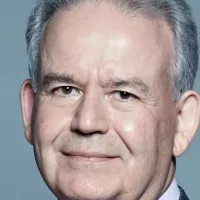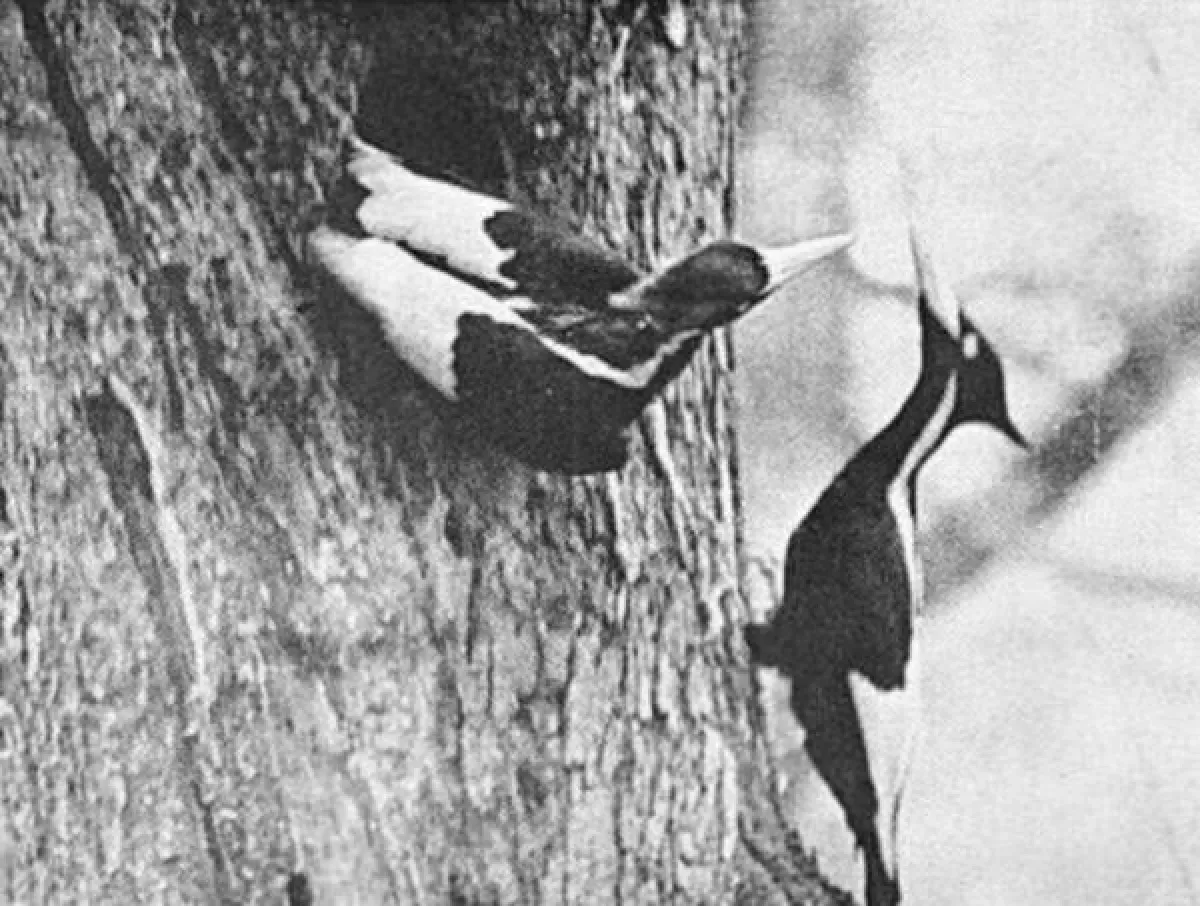The ivory-billed woodpecker, once common in Southern US and Cuba, is critically endangered due to habitat loss and hunting. IUCN lists it as critically endangered, and ABA as potentially extinct. The last confirmed US sighting was in 1944, and in Cuba in 1987. Unconfirmed sightings persist, offering a glimmer of hope for its survival.
1900: Sightings and Reports Outside Known Ranges
Around 1900, several reports emerged of ivory-billed woodpecker sightings outside of their generally accepted range, particularly in areas along the San Marcos River, Guadalupe River, and near New Braunfels.
1907: President Roosevelt's Sighting
President Theodore Roosevelt documented seeing three ivory-billed woodpeckers on a bear hunting expedition in northeast Louisiana swampland in 1907.
1924: Discovery and Loss of Nesting Pair
Arthur Augustus Allen discovered a nesting pair of ivory-billed woodpeckers in 1924 in Florida. Sadly, local taxidermists shot the pair to acquire specimens.
1932: Specimen Leads to Expedition
In 1932, Mason Spencer, a Louisiana state representative, shot an ivory-billed woodpecker and brought the specimen to a wildlife office, prompting an expedition to study the birds.
1937: Study of Ivory-Billed Woodpeckers Begins
James Tanner initiated his in-depth study of the ivory-billed woodpeckers on the Singer tract in 1937, which lasted until 1939 as part of his thesis work.
1939: Estimate of Remaining Population
By 1939, James Tanner estimated that only 22-24 ivory-billed woodpeckers remained, highlighting the species' dire situation.
1942: Publication of Range Map
James Tanner published a range map in 1942, detailing the historical range of the ivory-billed woodpecker.
1942: Reference in Literature
William Faulkner referenced the ivory-billed woodpecker, called "Lord-to-God" by locals, in his 1942 novella "The Bear."
April 1944: Last Confirmed Sighting in the US
Don Eckelberry, an Audubon Society artist, made the last universally accepted sighting of an ivory-billed woodpecker in the US during April 1944.
1944: Collins' Argument on Lack of Clear Photographs
Mike Collins put forth an argument that the scarcity of clear photographs of the ivory-billed woodpecker after 1944 is directly related to the species' behavior and its preferred habitat. He contended that the expected time interval between obtaining clear images of this elusive bird would be considerably longer than for other bird species with comparable rarity. This argument highlights the challenges inherent in documenting such a rare and elusive species.
1944: Regular Reports of Sightings Begin
Starting in 1944, consistent reports of potential ivory-billed woodpecker sightings began to emerge across the southeastern United States. These reports often originated from Louisiana, Florida, Texas, and South Carolina. However, many turned out to be misidentifications of other woodpecker species, particularly the pileated woodpecker and the red-headed woodpecker.
1944: Last Universally Accepted Sighting in Louisiana
The last universally accepted sighting of an American ivory-billed woodpecker took place in Louisiana in 1944.
1948: Rediscovery of the Cuban Ivory-billed Woodpecker
John Dennis, a prominent figure in ornithology, made a significant contribution to the field in 1948 by rediscovering the Cuban ivory-billed woodpecker. This rediscovery fueled hope for the survival of its close relative, the American ivory-billed woodpecker.
1950: Audubon Society Establishes Chipola River Sanctuary
Responding to reports of a pair of ivory-billed woodpeckers in the area, the Audubon Society took action in 1950. They established a dedicated wildlife sanctuary along the Chipola River to protect the potentially rediscovered species.
1952: Closure of Chipola River Sanctuary
By 1952, efforts to relocate the ivory-billed woodpeckers within the Chipola River sanctuary proved unsuccessful. As a result, the Audubon Society made the difficult decision to discontinue the sanctuary.
March 11, 1967: Ivory-billed Woodpecker Listed as Endangered
On March 11, 1967, the U.S. Fish and Wildlife Service officially recognized the ivory-billed woodpecker as an endangered species, marking a pivotal moment in its conservation history.
1967: Sightings and Feather Discovery in Highlands County, Florida
Between 1967 and 1969, ornithologists H. N. Agey and G. M. Heinzmann documented eleven separate sightings of what they believed to be one or two ivory-billed woodpeckers in Highlands County, Florida. Following storm damage to a tree where the birds were often seen, a feather was recovered. Expert analysis by A. Wetmore identified it as an inner secondary feather of an ivory-billed woodpecker, though its age couldn't be definitively determined. This discovery added to the ongoing debate surrounding the species' continued existence.
1967: John Dennis Reports Sightings in Texas
Renowned ornithologist John Dennis, known for his rediscovery of the Cuban ivory-billed woodpecker in 1948, conducted research along the Neches River in Texas in 1967. During his investigations, he reported multiple sightings of ivory-billed woodpeckers and made audio recordings of calls that closely resembled those of the species. These reports contributed to the establishment of the Big Thicket National Preserve.
1969: End of Highlands County Sightings
By 1969, the series of ivory-billed woodpecker sightings in Highlands County, Florida, observed by Agey and Heinzmann, came to an end. The recovered feather from this period remains a subject of interest and debate among researchers studying the elusive woodpecker.
1971: George Lowery Presents Photographs at AOU Meeting
George Lowery, director of the Louisiana State University museum, presented two intriguing photographs at the 1971 American Ornithologists' Union annual meeting. These images, captured by Fielding Lewis in Louisiana's Atchafalaya Basin, appeared to show a male ivory-billed woodpecker. However, the quality of the photographs was a subject of debate. While they exhibited the expected field markings, their resolution wasn't sharp enough to definitively rule out the possibility of a mounted specimen, leading to widespread skepticism within the ornithological community.
1987: Last Universally Accepted Sighting in Cuba
The last universally accepted sighting of a Cuban ivory-billed woodpecker occurred in 1987.
1999: Compelling Sighting in Pearl River Region
In 1999, a forestry student from Louisiana State University reported a significant event: an extended observation of a pair of birds in the Pearl River region of southeast Louisiana. The details provided in the student's account were convincing enough to pique the interest of several experts in the field.
2002: LSU and Cornell Expedition Investigates Pearl River Region
Responding to the intriguing report from 1999, a joint expedition was launched in 2002. Researchers from Louisiana State University and Cornell University embarked on a 30-day search of the Pearl River region. While the team found evidence suggesting the presence of large woodpeckers, they couldn't definitively attribute these signs to ivory-billed woodpeckers as opposed to pileated woodpeckers.
2004: Gene Sparling's Sighting and Subsequent Investigation
Gene Sparling's reported sighting of an ivory-billed woodpecker in Arkansas' Cache River National Wildlife Refuge in 2004 set off a chain of events. This report led to an investigation by Tim Gallagher and Bobby Harrison, who also reported observing the bird. Following their findings, John W. Fitzpatrick of the Cornell Laboratory of Ornithology spearheaded an expedition that resulted in seven compelling sightings of the woodpecker, recordings of its distinctive calls, and a brief video footage. While the Arkansas Audubon Society accepted this evidence, it faced scrutiny from other researchers who questioned the video's clarity and the possibility of misidentification with a pileated woodpecker. The debate over the validity of these sightings continues.
2005: Auburn University and University of Windsor Commence Research
In 2005, a team of scientists from Auburn University and the University of Windsor embarked on a research project focusing on the potential presence of ivory-billed woodpeckers along the Choctawhatchee River. This project involved a combination of visual observations, audio recordings, and analyses of tree cavities and bark stripping patterns. The team's objective was to gather evidence that could shed light on the elusive woodpecker's status.
2005: Continued Searches and Debate
The year 2005 saw ongoing efforts to locate the elusive ivory-billed woodpecker in the region where it was reportedly sighted in 2004. Although there were additional reports of sightings, none provided conclusive proof of the bird's existence. The debate over the authenticity of the 2004 video footage and the possibility of misidentification with a pileated woodpecker persisted, fueling further investigation and analysis.
February 2006: The Call of the Ivory-billed Woodpecker Celebration
In February 2006, Brinkley, Arkansas, hosted "The Call of the Ivory-billed Woodpecker Celebration" to capitalize on the increased tourist interest in the bird.
2006: Genetic Distinction Between American and Cuban Ivory-Billed Woodpeckers
A 2006 study using DNA samples concluded that the Cuban and American ivory-billed woodpeckers are genetically distinct species.
2006: End of LSU-Cornell Search Efforts
After conducting extensive searches across multiple states, including Arkansas, Florida, Illinois, Louisiana, Mississippi, North Carolina, South Carolina, Tennessee, and Texas, the collaborative team from Louisiana State University and Cornell University concluded their search efforts in 2006. Despite their thorough investigations, they couldn't uncover definitive evidence of the ivory-billed woodpecker's continued existence, marking a significant point in the ongoing search for the elusive bird.
2006: Mike Collins Begins Reporting Sightings
In 2006, Mike Collins began documenting sightings of what he identified as ivory-billed woodpeckers, marking the start of his research into the species' potential continued existence. His work would involve gathering visual and video evidence to support his observations.
2006: Extensive Sightings and Recordings Along Choctawhatchee River
Throughout 2006, scientists from Auburn University and the University of Windsor meticulously documented numerous observations along the Choctawhatchee River. These observations included 14 sightings of birds identified as ivory-billed woodpeckers, as well as auditory detections of their distinctive calls on 41 occasions. Furthermore, the research team made 244 recordings of potential ivory-billed woodpecker vocalizations. These findings fueled their investigation and provided substantial data for analysis.
2007: Ivory-billed Woodpecker Specimens Cataloged
By 2007, a total of 413 Ivory-billed Woodpecker specimens were recorded in various museum and university collections, highlighting the impact of historical hunting and collection practices on the species.
2007: Video Evidence from Choctawhatchee River
In 2007, Mike Collins captured video footage at the Choctawhatchee River in Florida that he believed showed an ivory-billed woodpecker. This footage, along with his other observations, formed the basis for his research and publications on the species.
2008: Woodpecker Documentary Filmed
Alex Karpovsky filmed "Woodpecker," a documentary about the Ivory-billed Woodpecker, in 2008.
2008: Decline in Sightings and Sound Detections
By 2008, the research team investigating the Choctawhatchee River observed a significant decline in both sightings and auditory detections of potential ivory-billed woodpeckers. The decrease in these crucial indicators prompted a reassessment of the research project's direction.
2008: Collins' Continued Sightings and Video Evidence
Mike Collins's efforts to locate ivory-billed woodpeckers persisted, and by 2008, he had accumulated ten reported sightings of the bird. Notably, he managed to obtain video footage at the Pearl River in Louisiana in 2006 and 2008, as well as at the Choctawhatchee River in Florida in 2007. His analyses of these sightings and video recordings were subsequently published in peer-reviewed scientific journals, contributing to the ongoing discourse surrounding this elusive woodpecker's status.
2009: Conclusion of Choctawhatchee River Research Project
After several years of dedicated research and analysis, the team investigating the Choctawhatchee River for evidence of ivory-billed woodpeckers made the decision to conclude their project in 2009. Despite their extensive efforts and earlier promising observations, the decline in sightings and call detections led them to this conclusion. However, it's important to note that their findings, while not universally accepted, contributed significantly to the ongoing scientific discussion about this elusive bird's status.
2012: Project Principalis Begins Survey
In 2012, Project Principalis, led by Mark Michaels and Dr. Steven Latta, began their decade-long survey in Louisiana to search for the Ivory-billed Woodpecker.
2012: Red Flag Film Release
The film "Red Flag," featuring Alex Karpovsky as a filmmaker showcasing his documentary about the Ivory-billed Woodpecker, was released in 2012.
2019: Five-Year Review Recommends Delisting
A comprehensive five-year review conducted by the U.S. Fish and Wildlife Service in 2019 recommended removing the ivory-billed woodpecker from the Endangered Species List. This recommendation was based on the assessment that the species had likely gone extinct.
2019: USFWS Review Finds Video Evidence Inconclusive
The U.S. Fish and Wildlife Service (USFWS) conducted a five-year review of the ivory-billed woodpecker's status in 2019. Their assessment of Mike Collins' video evidence, which he believed showed the woodpecker, concluded that the footage was inconclusive. The blurred nature of the images prevented a definitive determination of whether they depicted ivory-billed woodpeckers or not.
October 2020: Bobby Harrison Presents Video Evidence
During the U.S. Fish and Wildlife Service's public comment period regarding the ivory-billed woodpecker's status, Bobby Harrison presented compelling video footage captured in October 2020. Harrison, a seasoned wildlife expert, asserted that the video depicted an ivory-billed woodpecker in flight, reigniting discussions and debates surrounding the bird's potential survival.
2020: Louisiana Wilds Project Offers Reward
In 2020, the Louisiana Wilds project offered a $12,000 reward for information leading to the discovery of an active Ivory-billed Woodpecker roost or nest, underscoring the ongoing efforts to locate the elusive species.
September 2021: Proposed Declaration of Extinction
In September 2021, the U.S. Fish and Wildlife Service proposed that the ivory-billed woodpecker species be declared extinct.
2022: Project Principalis Concludes Survey
In 2022, Project Principalis concluded their decade-long survey in Louisiana to search for the Ivory-billed Woodpecker.
May 2023: Project Principalis Findings Published
In May 2023, Project Principalis, a research group, published their findings on the Ivory-billed Woodpecker in the journal Ecology and Evolution. Their evidence, gathered from 2012 to 2022, suggests the bird might not be extinct.
October 2023: Decision on Extinction Status Pending
As of October 2023, a final decision on the extinction status of the ivory-billed woodpecker is still pending. The U.S. Fish and Wildlife Service is continuing its comprehensive analysis and review of all available information before reaching a conclusion.
Mentioned in this timeline
North Carolina is a Southeastern U S state the th-largest...
Florida a southeastern U S state boasts the longest coastline...
Illinois is a Midwestern U S state bordering Lake Michigan...
Texas the second-largest US state by area and population is...

Bears are carnivoran mammals belonging to the family Ursidae classified...
South Carolina a Southeastern U S state bordering North Carolina...
Trending
1 month ago Mark Gronowski Injured During Iowa vs. Indiana Game: Update on Iowa QB

57 minutes ago Jesse Palmer Hints at Twists in 'Golden Bachelor' Finale, Mel's Fate Uncertain.
24 hours ago UI student arrested for flipping Turning Point table, facing charges from prior incident.
The title Duke of Connaught and Strathearn was bestowed upon Prince Arthur Queen Victoria's third son on May Alongside the...
6 months ago Ohio Paychecks, Trump Tax Bill, and Senate Republicans' Megabill Concerns

Sir Julian Murray Lewis is a British Conservative Party politician currently the Member of Parliament for New Forest East since...
Popular

Nancy Pelosi is a prominent American politician notably serving as...

Zohran Kwame Mamdani is an American politician currently serving as...

William Franklin Graham III commonly known as Franklin Graham is...

Chuck Schumer is the senior United States Senator from New...

Gavin Newsom is an American politician and businessman currently serving...
Nicholas J Fuentes is a far-right political commentator and activist...
